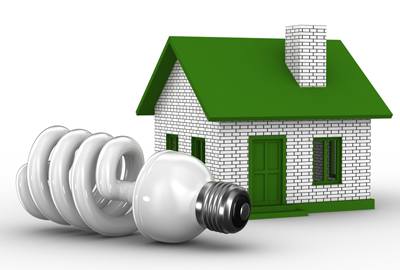
A zero energy home (ZEH) is one where all of the energy needs for the household are supplied by alternative means. It does not mean a home that uses no electricity. Solar panels and solar water heating systems are generally the form of energy employed by these homes, because they are residential. Residential wind turbines are uncommon in most communities neighborhoods.
A zer o energy home needs some sort of back-up. It is not actually an "off the grid" home. The sun is not always shining, and sometimes a home's energy needs drastically increase for a variety of reasons (a cold snap, a heat wave, or an increase in laundry). In fact, zero energy homes remain connected to the utility grid, and often engage in net metering.
Net metering means both the energy you use from the grid and the amount you put back into the grid are measured. Because an electric meter can spin forward or backward, the homeowner gets credit for the energy he or she puts into the grid, which is a good safeguard against those times when you need back-up.
How a ZEH Works
As noted above, a photovoltaic solar power system is employed for electricity generation. Water is heated by a passive, solar-thermal system. Passive systems do not use electrical energy to warm the water. They simply collect the sun's heat and use it to warm water. Energy needs are greatly offset or replaced for heating, cooling, lighting, and appliances.
What Else Is Involved In a ZEH?
Some ZEH builders use awnings over the windows and large eaves to block hot summer sunlight but let in sunlight in the winter. Windows in a ZEH home are thick, as is the insulation. Skylights supply much of the indoor light and the solar panels are on the roof, so the angle and location of the home are carefully considered by the builders.
How Do You Obtain a Zero Energy Home?
There are professional builders that specialize in or include the construction of zero energy homes in their repertoire.
You could also take a DIY approach and convert your existing home into a zero energy home. Although, in theory, a conventional home could be converted into a ZEH, the essence of a ZEH is that it is constructed from the ground up. This is because the designers incorporate a lot of "tricks" and design elements within the house's walls, roof, and so forth that would be impossible to insert into an existing home.

